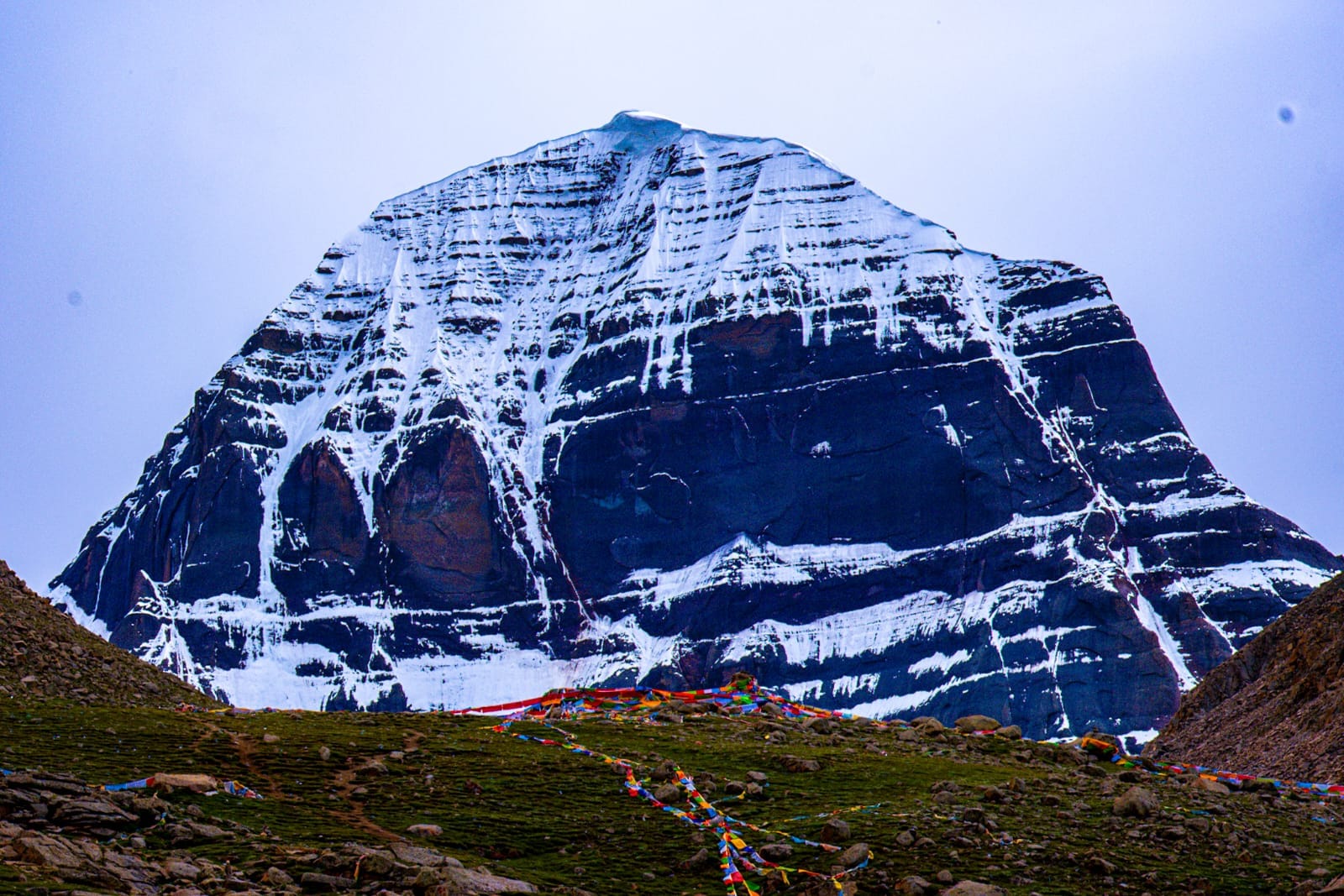By Harish Thottungal, UK
My initial inclination to embark on the Kailash pilgrimage alongside Mohanji began as a modest aspiration. The desire prospered significantly as I delved into accounts of past Kailash with Mohanji journeys and absorbed various testimonials recounting profound experiences. It became apparent that a pilgrimage to Kailash was inevitable for me; otherwise, it would linger persistently. In 2019, I resolved to undertake the journey. However, due to the onset of the COVID-19 pandemic, the Kailash Yatra was put on hold. The next opportunity arose in 2023 when the program resumed. Without hesitation, I promptly applied.
During this period, a few individuals also mentioned Dev Kumbh. Completing a parikrama during Dev Kumbh is equivalent to doing it 12 times, rendering one eligible for the Inner Kora. The next Dev Kumbh was scheduled for 2026. The suggestion to wait until then crossed my mind, but uncertainties about the future compelled me to seize the present opportunity.
The program was meticulously organised, providing details about essential items to purchase, their purpose, and the situations in which they would be used. The organising committee of the Mohanji Foundation offered clear explanations during Zoom sessions, addressing doubts and questions about the program. Equipped with this information, I felt prepared for the Kailash Yatra. Interestingly, I did not undertake any specific fitness preparations for the program.
We had 27 individuals expressing their desire to embark on the pilgrimage, hailing from diverse locations such as the UK, USA, South Africa, Australia, Serbia, Bosnia, Croatia, and more. When all the participants gathered, it was remarkable how we instantly felt like a cohesive family – a unified group with a beautiful sense of togetherness. The atmosphere consistently radiated positivity, contributing to a fantastic experience.
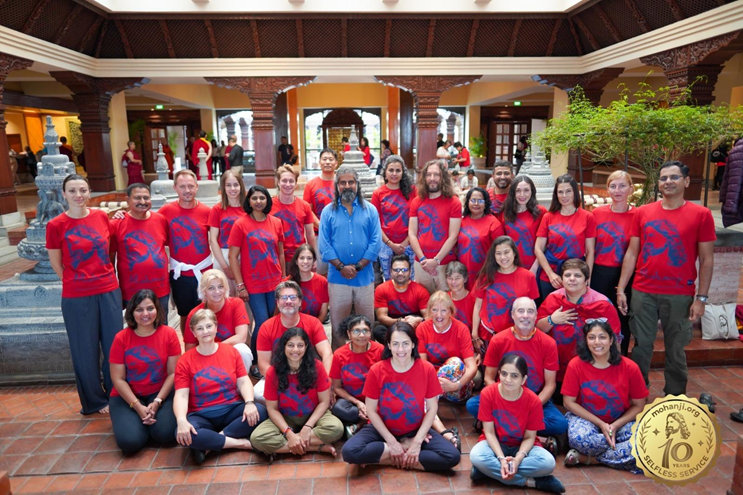
Our time in Kathmandu was delightful as we explored local temples like Pashupatinath and the Vishnu temple. Mohanji’s presence was a constant guiding force, answering our queries through satsang. He shared meals with us, including breakfast, lunch, and sometimes dinner. Even when he skipped dinner, he would sit with us for a chat, creating a terrific sense of camaraderie. This marked the first program where Mohanji spent extensive time with participants, ensuring everyone was mentally prepared for the journey and addressing all inquiries.
Several key points from Mohanji are worth highlighting:
● Completing the pilgrimage involves visiting Mansarovar, taking a dip (if possible), and gazing at Kailash. Anything beyond completing the parikrama is considered a bonus. Participants were reassured not to worry if they couldn’t go beyond Mansarovar.
● Considering the higher altitude and reduced oxygen levels, Mohanji advised a cautious approach. From walking to other activities, everything should be done slowly to conserve energy and prevent over-exertion.
● Mohanji emphasised the group’s participation in a Homa at Mansarovar, selecting Kannaiah for the ritual and ensuring he was well-prepared.
Participants had numerous questions, and Mohanji patiently addressed them with clarity. He also underscored that while individuals had varying fitness levels, mental stability and willpower were the crucial factors for the Kailash Yatra and completing the parikrama. This sentiment resonated with my own experience.
After completing the visa formalities required to enter Tibet, our Yatra commenced from Kathmandu. The bus journey to the Tibetan border at the Friendship Bridge spanned nearly eight hours, beginning in the morning with Mohanji’s blessings. By evening, we arrived at the border after a challenging 10-hour drive. Some of us, including myself, experienced motion sickness during the journey, but we were given Mai-Tri by our fellow traveller, Moushumi, which definitely had a healing effect on me as I felt better once we settled into the hotel.
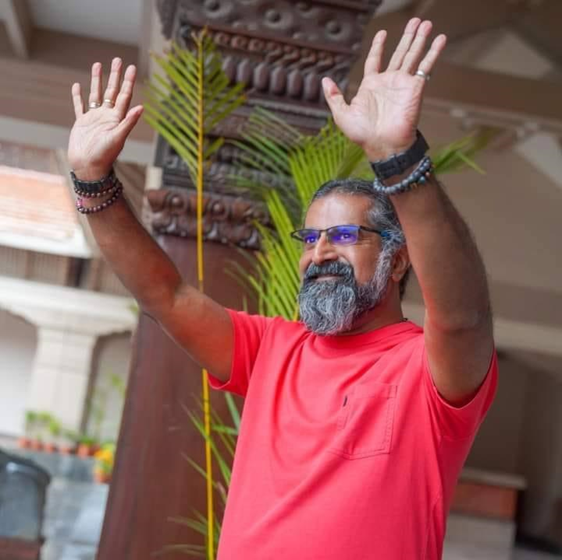
The following morning, after a restful sleep, our task was to proceed to the border and complete the necessary formalities, which took some time with the Chinese authorities but was accomplished relatively smoothly without any complications. We all took a sigh of relief, with a silent thanks to Mohanji. Subsequently, we crossed the border, and a Chinese guide joined our group, accompanying us full-time in Tibet. Our journey continued by bus to Gyirong (3000 m), where we aimed to acclimate to higher altitudes daily. Gyirong provided a picturesque setting with abundant vegetation and good oxygen levels. We kept active by going for walks and maintained high energy levels through nightly sessions of Mohanji aarati and bhajans.
As we progressed, the journey to Saga presented a significant challenge due to its higher altitude of around 4660 meters and the absence of vegetation, resulting in lower oxygen levels. Several participants, including myself, fell ill, grappling with symptoms of altitude sickness. Following Mohanji’s advice to conserve energy, I navigated the challenges at a slower pace, combating doubts that surfaced about my ability to continue the Yatra. This phase marked my first moment of uncertainty, but timely support from the group, particularly from Bhavani and Zoran, reinstated my faith and determination to complete my journey. I realised that it was Mohanji who was speaking through them. He wasn’t giving up on me yet!
The subsequent day proved even more challenging as we embarked on the journey to Mansarovar, enduring a nine-hour bus ride. The journey had additional challenges, including a breakdown that required hours of waiting for repairs. While stuck inside the bus in my frail condition, the chanting and bhajans by our group maintained the spirit high, never missing Mohanji’s presence with us, even for a moment. Despite worsening physical conditions, reaching Mansarovar brought a sense of satisfaction as Kailash became visible.
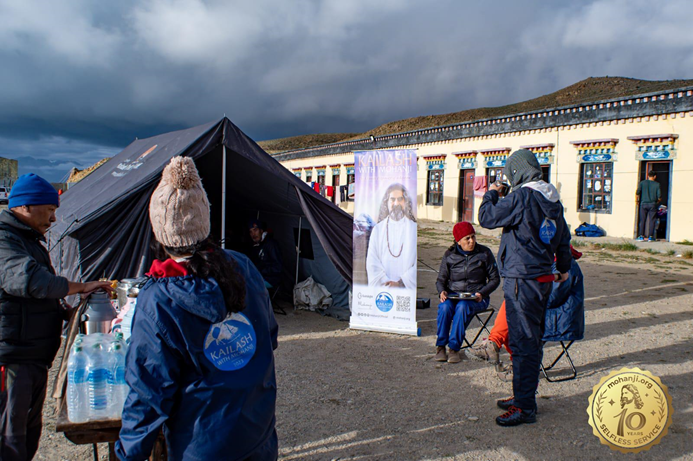
The majestic Kailash was in front of us! The first sight brought the feeling of being at the abode of Lord Shiva. Basic accommodation near the lake meant shared rooms with minimal heating, but resting was prioritised. As attending the aarati and chanting in a tent proved challenging, my mind grappled with whether I could complete the parikrama. I could feel the onset of fear despite my faith in my Guru. I was slowly bending under the physical weakness.
Medical assessments revealed my oxygen level at a borderline figure of 60. Now, the decision was left to me – to proceed with the parikrama or not. I faced two options: either stay at the hotel and refrain from continuing the journey or undertake the parikrama with uncertainty. The realisation struck that my sole anchor point was faith in my Guru, Mohanji, and his grace. It was his grace that helped me to make the right decision! Despite physical challenges, I trusted that his protection and support would enable me to complete the parikrama.
I recalled Mohanji’s analogy of Kailash parikrama as a software upgrade, a transformative experience that requires the right conditions and awareness, all of which Kailash provides. The upcoming day held immense significance as it entailed participating in the sacred rituals at Mansarovar, including a powerful Homa ceremony. Mohanji had emphasised the importance of rituals in Mansarovar, gazing at Kailash and setting one’s intentions – a pivotal aspect of the parikrama.
Despite my worsening condition when I woke up the next morning, I held onto the faith that Mohanji was with me and that he would take care of me. While struggling to consume some breakfast, the importance of nourishment was evident. Our plan was to walk south along the shore of Mansarovar to conduct the Homa in an open space and, if possible, engage in sacred rituals. A 10-15 minute walk along the lake was on the agenda. However, at that time, even 10-15 steps seemed almost impossible to me. I brushed aside my fears, remembered Mohanji and was about to set out on the journey.
Just then, the Sherpas noticed my condition and expressed concern, suggesting that I join them in the car that was transporting the necessary items for the Homa and the tent. Seated in the car, I thanked Mohanji for taking care of me and also contemplated the challenges ahead. Upon reaching the site, situated next to the lake, doubts lingered about how this would unfold. The freezing lake and my compromised physical state posed considerable challenges. The fatigue was extreme, including fever and severe headache; every bone in my body was shivering with the cold. I was barely able even to stand straight.
Nevertheless, I was determined to do my sacred rituals, trusting in Mohanji’s care. Positioned at the shore, I observed fellow participants slowly gather and engage in their rituals. I struggled to stand and engage in the ritual. This was my second point of uncertainty. Almost giving up on the ritual, I was considered a quick retreat from where I was to a comfortable space. Just then, I heard my name being called out! I felt as if Mohanji was calling me! I turned around and saw Moushumi, who encouraged me to endure and even offered to support me if I struggled. I recognised this was Mohanji’s command, his direct support.
I gathered my strength and decided to proceed. Surprisingly, within a minute, my pain disappeared. Encouraged by this shift, I ventured further into my rituals and completed them; I expressed gratitude to Mohanji for allowing me to complete these crucial rituals. I also carried a Shivlinga, small murtis, and a Rudraksha mala, along with larger malas for the Mohanji Centre of Benevolence Scotland. I dipped them in the lake to energise them. It was later confirmed that upon reaching MCB Scotland, the malas emitted immense energy, as felt by our MCB Priest Jack Barratt.
Soon enough, I realised I was free from pain and fatigue, and I wondered why. The revelation dawned – it all transpired after the transformative ritual. Surely, it was none other than Mohanji who kept his promise, “I am always with you. I am taking care of you.” My heart was filled with gratitude; fear was receding, heaviness from my head was disappearing, and the brightness outside was appearing inside, too – light and bright.
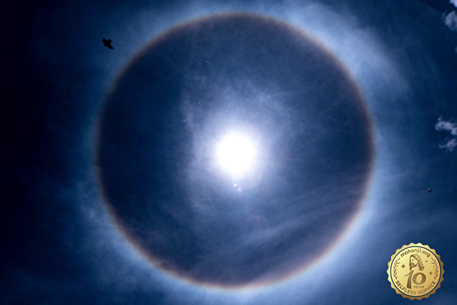
As Kannaiah and the team arranged for the Homa setup, I took a chair near the Homa kund, grateful to be part of this unique ritual. The Homa was extraordinary, and the feeling of participating in it beside Mansarovar was unearthly. Each participant received a small wooden log to symbolise letting go of aspects of themselves, burning it as part of the Homa. After the Homa, someone urged us to look up at the sky, revealing a remarkable sight – a big circle around the sun and a triangle within the sun, a divine blessing.
Returning to our accommodation by car, I later boarded the bus for a parikrama around Lake Mansarovar. We collected clear water from the lake and marvelled at Kailash. Moving to a hotel at the base camp, we stayed overnight, continuing our rituals with aarati and bhajans. The next day marked the beginning of our parikrama and preparations, including booking porters and ponies as advised by Mohanji. He always emphasised taking a pony, even if intending to walk, as acquiring one halfway through the parikrama could be challenging.
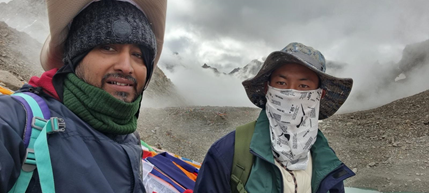
The next day’s dawn brought a mix of excitement and contemplation on the uniqueness of our pilgrimage. Despite being in my weakest physical state, the parikrama had yet to begin – an ultimate test of willpower and faith. We packed our backpacks with essentials for the next three days, and the entire team gathered for breakfast. My health condition showed no improvement, and doubts about completing the parikrama loomed in my mind. Following breakfast, as we stood in a circle to receive instructions for the journey, I recalled Mohanji’s teachings on the power of pure intentions.
Seizing the moment, I suggested that the team join hands, connecting to Mohanji’s consciousness and collectively expressing our intention for everyone to complete the parikrama successfully. A minute of silence ensued, during which some participants reported experiencing a surge of energy and goosebumps, fostering a positive attitude within the team. Mohanji’s presence was felt by all, which brought this sudden surge of energy.
We took the bus to the starting point, where we acquired our porter and pony – symbolic allies on this journey, akin to Shiva’s Ganas, aiding us in completing the parikrama. The parikrama commenced at Yamdwar, a point signifying the shedding of aspects of ourselves that we wish to let go, marking the start of a new life. Setting my intention on what I wanted to release, I began the journey, alternating between walking and riding the pony. The day was strenuous, with intermittent glimpses of Kailash, accompanied by the chanting of “Om Namah Shivaya.”
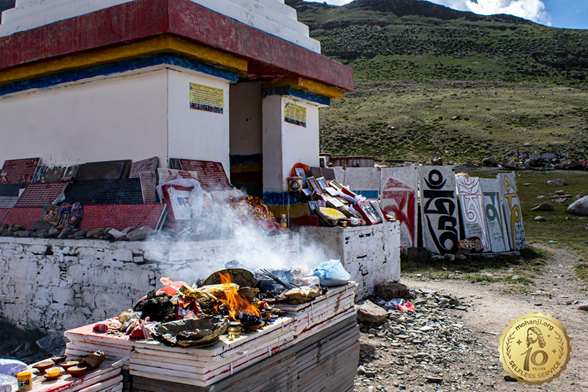
I successfully completed day one with the assistance of the pony and porter. The location offered the closest view of Kailash, an awe-inspiring experience that captivated the team. At an elevation of around 5000 meters, breathlessness became palpable, requiring me to consciously extend my breath for more oxygen. I was weak but far from giving up.
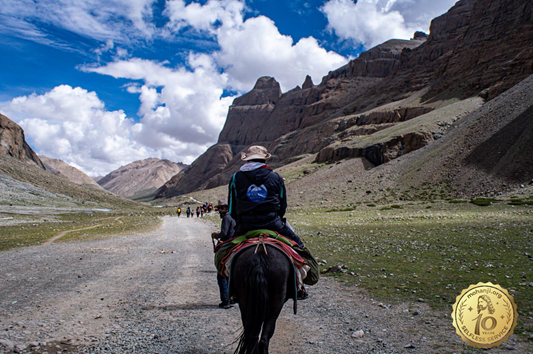
The Sherpas provided hot soup and delicious food, though altitude sickness made eating a challenge. As day two loomed, acknowledged as the most challenging part of the parikrama, I focused on preparing myself for the physical demands. Despite struggles with breathlessness during the night, I prioritised rest and welcomed the Sherpas’ checks to ensure my well-being.
Later that night, I woke up with severe breathlessness and called out with despair, in a feeble tone, “Is anyone around?” in the pitch-dark room, maybe 4 or 5 of us in that room, I heard a voice,” Harish, get up. Sit up. And breathe.” I felt the command was from Mohanji. I simply followed, and soon enough, I was able to regain my breathing and realised it was from a fellow roommate. Mohanji, once again, was right there with me at the point when I was giving up! The rest of the night was uneventful, and I was able to take some rest.
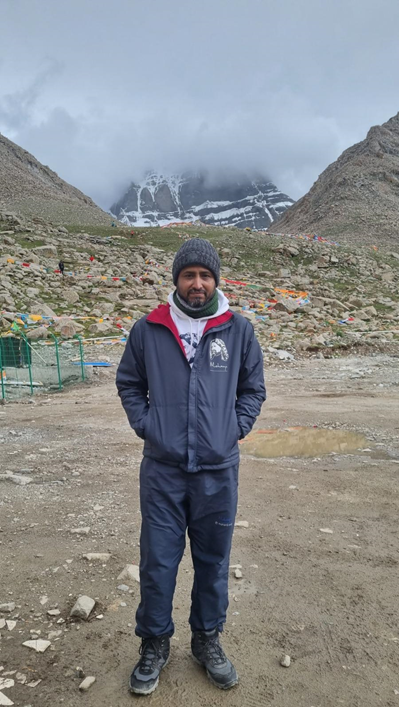
The second day commenced with Sherpas waking us up with hot tea, followed by breakfast. Prepared and determined, we embarked on what is considered the most challenging leg of the parikrama – day two. This segment involved ascending to Dolmala Pass at an elevation of 5800 meters, followed by a descent and a subsequent walk of approximately 12 km, totalling over 23 km.
Opting for the assistance of a pony, I began the journey, and upon reaching Dolmala Pass, fatigue set in. Despite being drained, the sight of Gauri Kund was breathtaking. Unfortunately, I couldn’t linger due to altitude sickness. Descending on foot, I rested whenever exhaustion set in, accompanied by the ever-present porter. Reaching a plateau, we encountered a few Chinese cafes, although they were dimly lit and cold, lacking power. As we approached the end of the long walk, it was lunchtime. The porter suggested I take my lunch, leaving me momentarily alone and fatigued, unsure of what to do next.
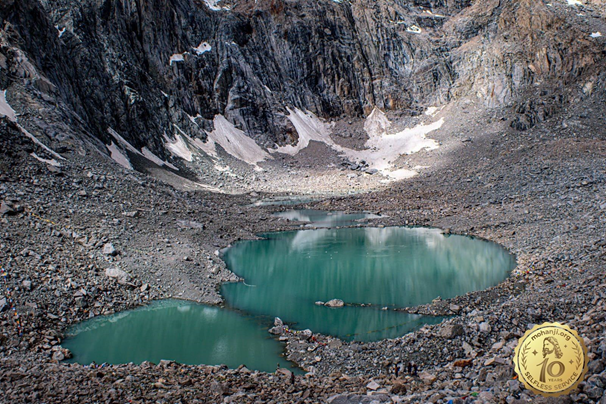
This was my third point of uncertainty. In that moment of need, divine intervention manifested. A voice called out to me from the darkened cafe on my right. Mohanji? Struggling with my bag, I made my way inside, discovering that the voice belonged to Thirushka from South Africa. She and Moushumi were having lunch, and an available seat was next to them. I gratefully joined them, sharing a bit of my packed lunch. Seated with them, I found solace, allowing myself to recover and rest.
The remaining stretch of the journey mostly unfolded on flat terrain, covering approximately 12 km. While I walked for a portion, I predominantly relied on my pony. Upon reaching the base, the team and I felt immense satisfaction, having successfully completed the challenging phase of the parikrama. However, that night brought another struggle with sleep, attributed to breathlessness. I recognised but also knew the M power with me; hence, I felt unhindered by the physical setbacks.
The last day of the parikrama was comparatively shorter, requiring 3-4 hours to complete. Starting early, I primarily walked this segment. Upon reaching the endpoint on day three, a profound sense of satisfaction and gratitude to Mohanji washed over me for enabling me to accomplish the parikrama. The team shared hugs, celebrating the collective achievement. Recognising my Shiva Ganas – my porter, pony, and its handler – I reached out to Tashi, one of the Sherpas, to translate and convey my heartfelt gratitude, acknowledging their significant role in my journey.
Subsequently, we embarked on our journey to Saga, with lingering altitude sickness until we reached Gyirong the following day. This entire expedition served as a touching reminder of the importance of living in the present moment and the power of faith. Kailash, in essence, symbolises dissolution. The experience underscored the imperative of embracing the current moment without undue concern for the future – why worry?
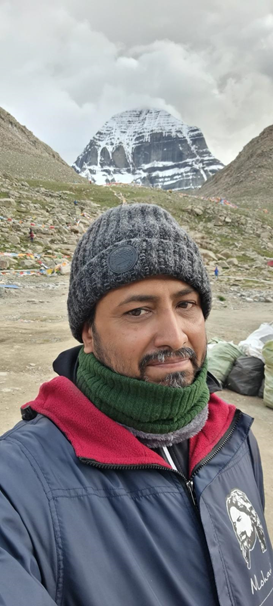
Reflecting on the entire journey, I attribute the completion of my parikrama to one crucial element: faith in the divine, in my case, in Mohanji. Kailash imparted a profound realisation about the significance of being connected to a Guru through unwavering faith. My sincere gratitude to Mohanji for making me realise that when I am alone, I am actually not alone!
Thank you, Mohanji, for being with me in every moment of this once-in-a-lifetime journey of Kailash. Thank you, my dear Kailash family, for being the instrument of Mohanji and making this journey such a memorable one. Thank you, Lord Shiva, for welcoming me to your abode and allowing me to accomplish my desire and intention.
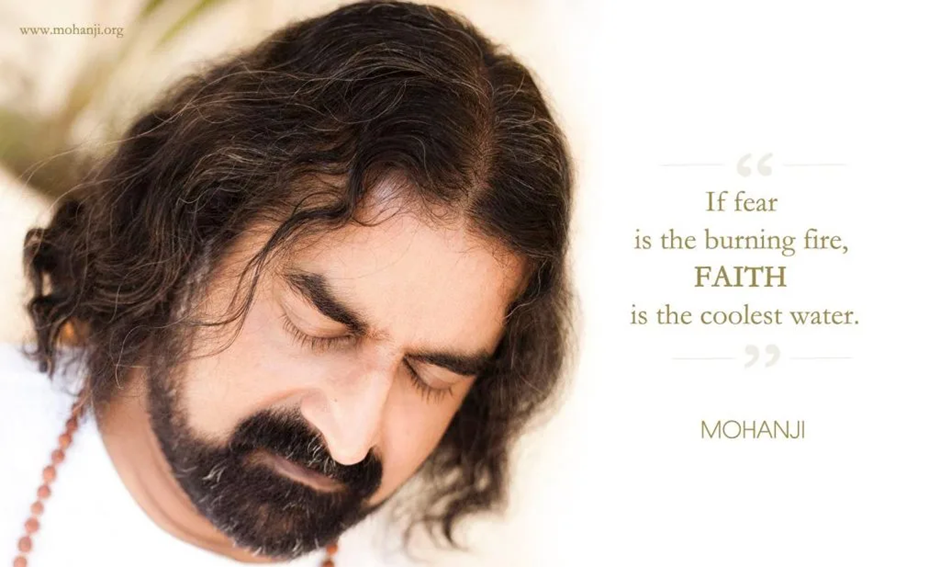
|| JAI BRAHMARISHI MOHANJI ||
Edited & Published by – Testimonials Team, 7th December 2023
Disclaimer:
The views, opinions, and positions expressed by the authors and those providing comments on these blogs are theirs alone and do not necessarily reflect the views, opinions or positions of Mohanji, Mohanji Foundation, it’s members, employees or any other individual or entity associated with Mohanji or Mohanji Foundation. We make no representations as to accuracy, completeness, timeliness, suitability or validity of any information presented by individual authors and/or commenters on our blogs and will not be liable for any errors, omissions, or delays in this information or any losses, injuries or damages arising from its display or use.
We reserve the right to delete, edit, or alter in any manner we see fit blog entries or comments that we, in our sole discretion, deem to be obscene, offensive, defamatory, threatening, in violation of trademark, copyright or other laws, of an express commercial nature, or otherwise unacceptable.
Mohanji Testimonials team


